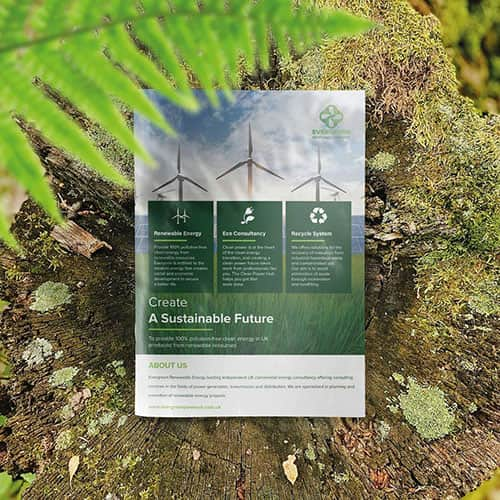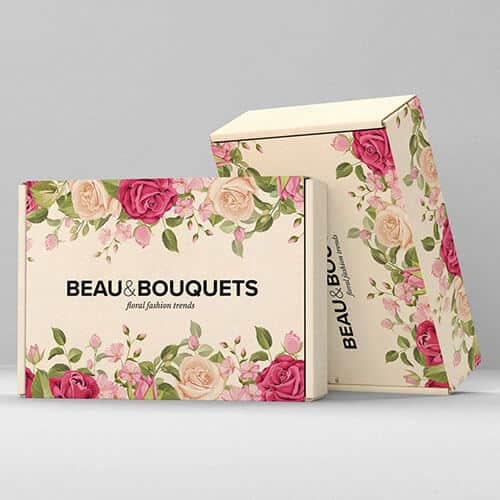In the world of business networking, a good business card remains an enduring staple. A well-designed business card not only conveys contact information but also reflects the essence of your brand.
To make the right impression, you need the right business card. Connect with our experts via phone at 0800 999 1094 or email at info@printingprogress.co.uk at Printing Progress for your personalised business card.
The standard size for business cards in the UK follows the dimensions of 85mm X 55mm (metric measure) or 3.35 inches X 2.17 inches. This size is widely accepted because it fits wallets and cardholders.
The perfect card should also have an appropriate thickness. The standard thickness for business cards in the UK is around 350 gsm (grams per square meter). Opting for a thicker cardstock adds durability and a premium feel to your card.
Designing Your Business Card
Your business card is like a window to your business perspective. The card should be easy to understand, durable and leave a lasting impression on the recipients. Let us understand how you can design the best business card for your business:
1. Layout and Orientation
When designing your business card, consider both layout and orientation. Landscape and portrait both serve different purposes and should be selected as per layout and brand type. While the landscape orientation is common, do not hesitate to experiment with the portrait orientation for a new and unique touch.
While printing, ensure that the design is printed in a safe area and has space to bleed to prevent important elements from being trimmed during the printing process.
2. Incorporating Brand Elements
Your business card is your brand identity. Incorporate elements such as your logo, brand colours and typography to ensure consistency across all marketing materials. Also, while selecting images and graphics, ensure that they are in high resolution, clear, and sharp.
3. White Space and Readability
Maintain a balance between information and white space to enhance readability. Avoid overcrowding the card with unnecessary details and instead focus on essential contact information and a clear call to action.
You may experiment with different font sizes and styles to ensure that the text is legible, even at a short and single glance.
4. Eco-friendly Options
In today’s environmentally conscious world, consider opting for sustainable and eco-friendly materials for your business cards. Use recycled paper and soy-based inks as an alternative to reduce environmental impact without compromising on quality.
Qualities Of a Good Business Card
A good business card in the UK not only serves as a medium for exchanging contact information but also makes a memorable impression. Here are some of the qualities that turn an average card into a good card:
1. Professional Appearance
A good business card should reflect professionalism. It should have a clear look and convey the brand’s ideology. The card should have a brand image and a sense of credibility and reliability.
2. Clear Text
The text and images printed on the card should be clear, legible and easy to read. Avoid using overly elaborated font sizes that are too big or too small. Ensure all the information is appropriately aligned and displayed.
3. Size
The business card should be 85 mm X 55 mm, and you may increase or decrease it according to your needs. The size should be convenient for recipients to store and carry, fitting neatly into wallets and cardholders.
4. High-Quality Print
The print should be sharp, vibrant and long-lasting. While selecting paper and print, always opt for high-quality products. Choosing the right paper and printing technique enhances the look of your card.
Are you looking for a high-quality print shop for your printing needs? Look no further; Printing Progress is here. Connect with our versatile team of experts, from business cards and flyers to full design and branding services; we’ve got your business covered.
Call us at 0800 999 1094 or drop an email on info@printingprogress.co.uk.
5. Branding
The design of the business card should be consistent with the brand’s overall identity. Add elements such as logo, brand colours and typography to reinforce brand recognition.
6. Durability
Choose a durable cardstock of around 350 gsm to ensure that the business card can withstand the daily wear and tear. A thicker card also conveys a sense of quality and premium. Thicker cards have more extended durability compared to light or slim cards.
7. Design
Choose a unique design for your business card to stand out from the competition. This could include any special features such as embossing, foil stamping or UV coating, as well as unique layouts or cutouts. Depending upon your business idea and budget, you can customise your card and shine.
8. Relevance
While printing the card, ensure that all the relevant details are printed and in the correct manner. It is essential to include contact details such as name, title, company name, phone number, email address and website URL.
9. Call to Action
Try to include a clear call to action that prompts recipients to the next step. It can be visiting your social media or website or filling out a quick contact form. You can add codes or scanners for easy accessibility to the next step.
10. Adaptability
In today’s era, business cards also need to be upgraded. Printing names and details are not sufficient to grab attention; consider adapting to modern trends by incorporating digital elements such as QR codes or NFC technology. This allows you to share additional information beyond the card or connect online.
Conclusion
Choosing the right business card design involves meticulous attention to detail and selecting the right printing and finishing options. You should adhere to the standard sizes prevalent in the UK market, but the card should be distinctive. Use creative ideas and designs to leave a lasting impression on clients and prospects alike.
So, seize the opportunity to showcase your brand and make everyone remember your card.


 Eco friendly, sustainably sourced recycled FCS certified print
Eco friendly, sustainably sourced recycled FCS certified print Takeaway Screens
Takeaway Screens Postal Boxes
Postal Boxes